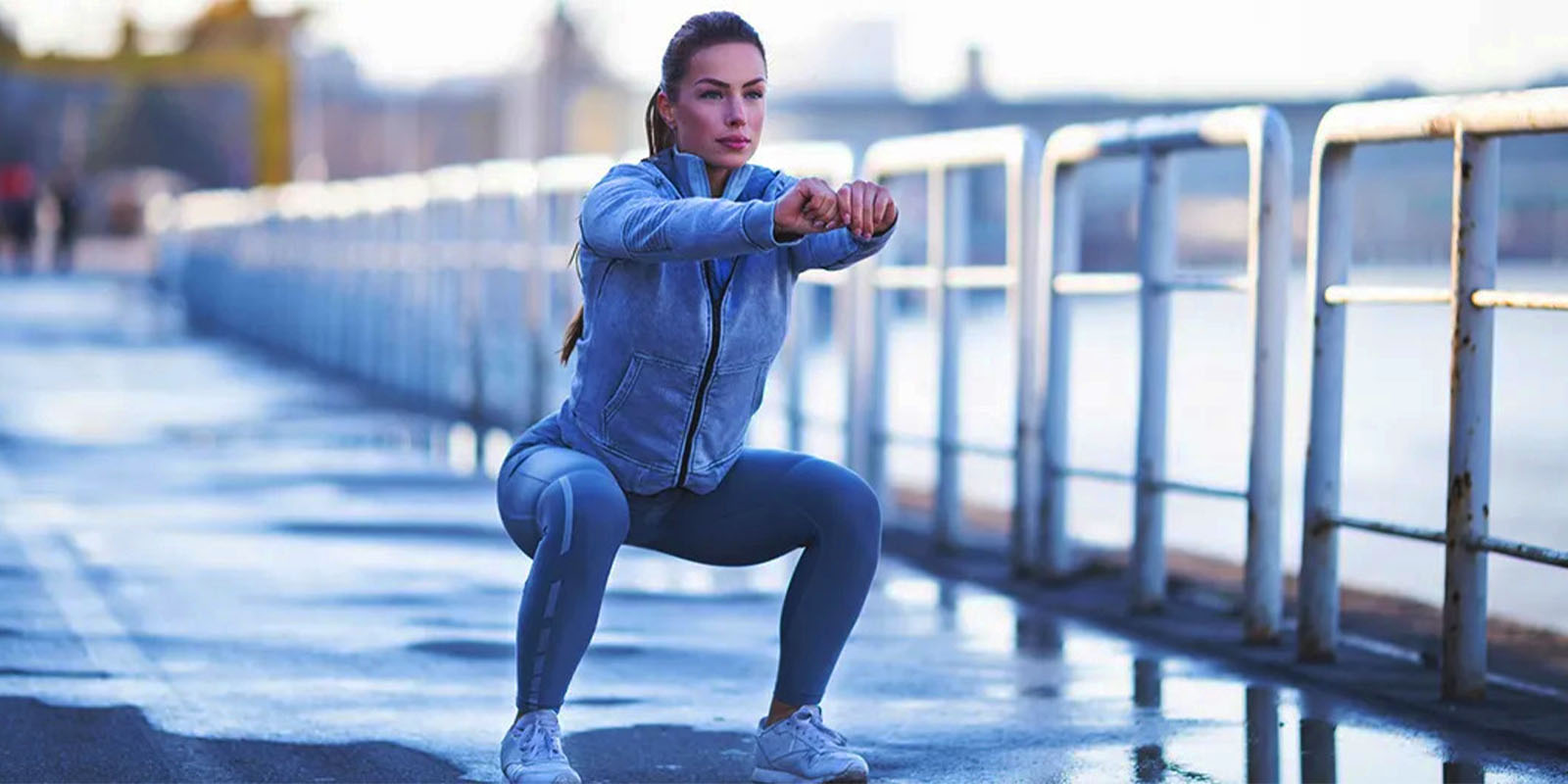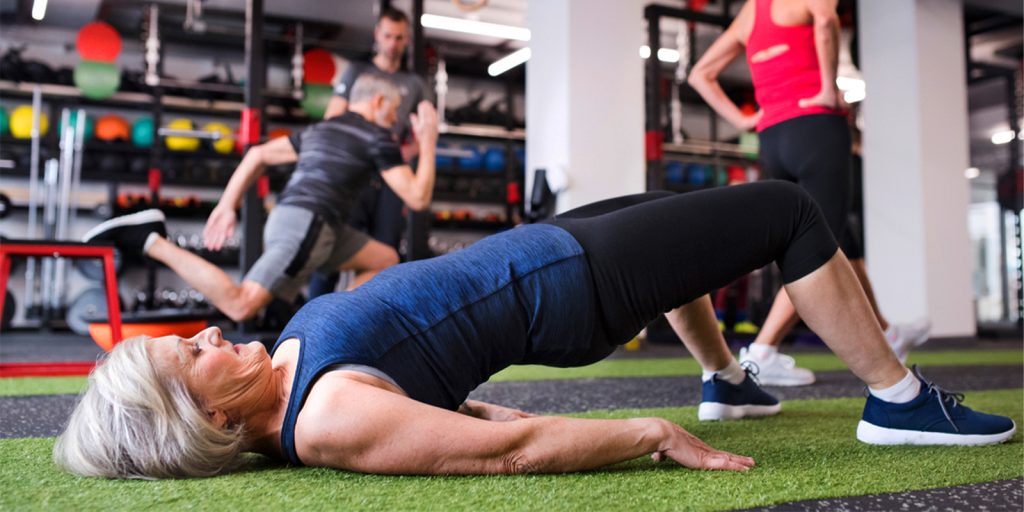


Nowadays sitting for long periods is something normal, that’s why weak glutes have become a widespread issue. In this article, RambodFit will provide you with information about ways training glutes can improve posture.
We will explore the anatomy and function of the glutes, how weak glutes cause poor posture, and how training glutes can improve posture, adjustment, spinal health, and overall well-being.
Table of Contents
The gluteal muscles play an important role in maintaining posture, supporting the spine, and stabilizing the pelvis. Weak or inactive glutes, usually referred to as gluteal amnesia or dead butt syndrome can cause poor posture, back pain, hip dysfunction, and various other musculoskeletal problems. Having a strong core and training glutes can improve posture.
Before we introduce you to how training glutes can improve posture, It’s better to start from the basics and learn the anatomy and functions of these muscles.

In this step of Training glutes can improve posture, we want to explore the Anatomy of the Gluteal Muscles. These muscles include:
The biggest and most powerful muscle in the human body, the gluteus maximus is actually responsible for hip extension, outward rotation, and abduction of the thigh. It plays a major role in movements like walking, running, and climbing stairs.
Located on the outer side of the pelvis, the gluteus medius is essential for hip abduction and rotation. It also helps with stabilizing the pelvis when standing on one leg, for example during walking or running.
The smallest of the gluteal muscles, the gluteus minimus works in conjunction with the gluteus medius to stabilize the pelvis and assist in hip abduction and internal rotation.
These muscles work together to provide stability to the pelvis and lower back. When they function properly, the glutes help stabilize proper posture, reduce the load on the spine, and allow for efficient and right movement patterns. However, when these muscles are weak or inactive, they can contribute to a package of postural and biomechanical problems.
In this step of Training glutes can improve posture, we want to explore the Impact of Weak Glutes on Posture including:
One of the most common postural problems related to weak glutes is anterior pelvic tilt. This occurs when the pelvis tilts forward, causing the lower back to arch too much (lumbar lordosis) and the abdomen to get forward or protrude. Training glutes can improve posture and help fix this condition.
Weak glutes fail to provide enough support for the pelvis, making the hip flexors tight and overactive. This imbalance pulls the pelvis forward, causing anterior pelvic tilt. Anterior pelvic tilt is often accompanied by lower back pain, however, training glutes can improve posture and fix the anterior pelvic tilt.
Weak glutes can cause lower back pain by failing to stabilize the pelvis and spine during movement. Normally, the gluteus maximus plays a crucial role in hip extension, such as during walking, running, and standing from a seated position.
When the glutes are weak or inactive, other muscles, mostly the lower back extensors, and hamstrings, take over the workload. This switch pattern places additional stress on the lower back and can lead to muscle strain, disc problems, and chronic pain.
According to a study published in the Journal of Orthopaedic and Sports Physical Therapy, weak glutes are often followed by lower back pain because of their inability to provide enough pelvic stabilization during activities such as lifting or bending. By strengthening the glutes, individuals can decrease the excessive strain on the lower back and promote healthier movement patterns that reduce pain and improve posture.
The effects of weak glutes aren’t just limited to the lower body. Weakness in the glutes can also lead to side effects in the upper body, particularly in the thoracic spine (mid-back) and shoulders. When the pelvis is misaligned because of weak glutes, it can cause a chain reaction, leading to forward head posture, rounded shoulders, and thoracic kyphosis (excessive rounding of the upper back).
A study in the Journal of Physical Therapy Science found that people with poor lower body posture, including weak glutes, are more likely to experience postural problems in the upper body. Training glutes can improve posture in the upper body, help restore alignment from the ground up, and reduce the strain on the neck and shoulders.
The gluteus medius and gluteus minimus play a crucial role in stabilizing the hip joint and preventing unwanted movements, particularly during single-leg activities like walking, running, or climbing stairs. When these muscles are weak, the pelvis can drop to one side, a condition known as Trendelenburg gait, which compromises posture and leads to hip, knee, and lower back pain.
In this step of Training glutes can improve posture, we want to explore the Best Glute Strengthening Exercises for Posture including:
Glute bridges are an excellent exercise for activating the gluteus maximus and strengthening the lower back and core. This exercise also helps reinforce the mind-muscle connection with the glutes, which can be especially useful for individuals suffering from gluteal amnesia.
Hip thrusts are one of the most effective exercises for targeting the glutes, particularly the gluteus maximus. By performing hip thrusts, you can isolate and strengthen the glutes while also improving pelvic stability and spinal alignment.
Single-leg deadlifts target the glutes, hamstrings, and lower back while also improving balance and hip stability. This exercise helps strengthen the gluteus medius and minimus, which are crucial for maintaining pelvic stability during movement.
Squats are a fundamental movement that strengthens the glutes, quads, and hamstrings. Properly performing squats also promotes better hip mobility, which is key for maintaining good posture.
Lunges work the entire lower body, but they particularly target the glutes, hamstrings, and quads. By performing lunges with proper form, you can improve your balance, strengthen your glutes, and enhance your overall posture.
To sum up, training glutes can improve posture and play a critical role in reducing strain and lower back pain. Weak glutes are often at the root of many common postural problems, such as anterior pelvic tilt, lower back pain, and hip instability.
With a strong and activated gluteal muscle group, you’ll experience better balance, reduced injury risk, and a more aligned, upright posture.
Training glutes can improve posture and fix back pain, by reducing the load placed on the lower back muscle.
Strong glutes stabilize the pelvis and let the lower back muscles function properly.
Yes, weak glutes hip instability, and knee pain. Syndromes like patellofemoral pain syndrome are usually caused because of weak glutes and poor hip alignment.
Also, it should be mentioned that training glutes can improve posture.